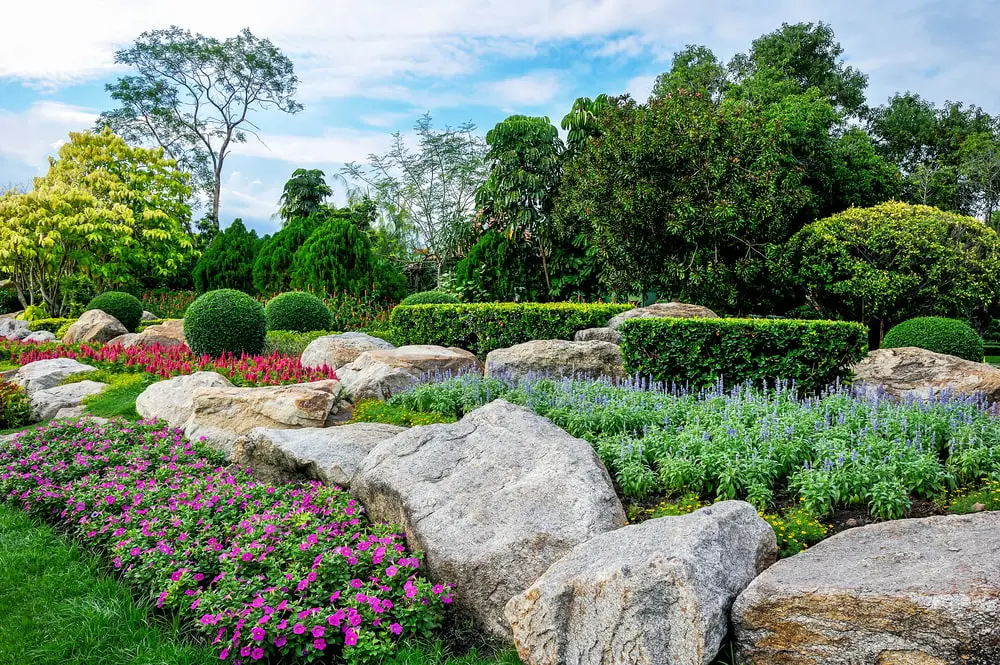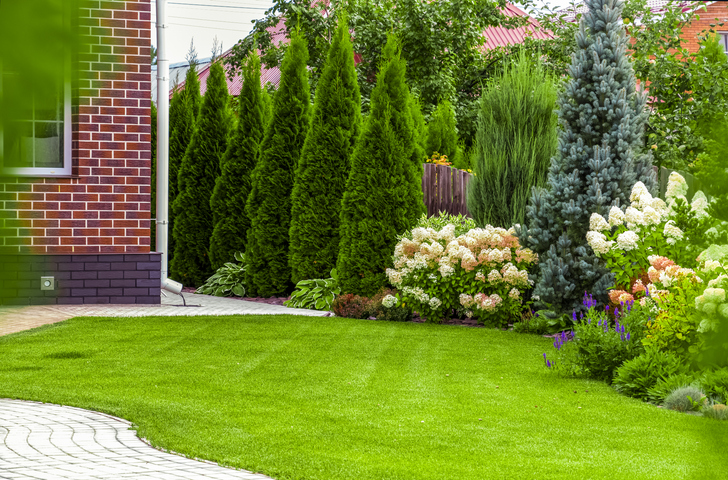Hilton Head Landscapes - An Overview
Hilton Head Landscapes for Dummies
Table of ContentsHilton Head Landscapes Can Be Fun For EveryoneThe 8-Second Trick For Hilton Head LandscapesAbout Hilton Head LandscapesHow Hilton Head Landscapes can Save You Time, Stress, and Money.Some Known Questions About Hilton Head Landscapes.Fascination About Hilton Head LandscapesThe 9-Second Trick For Hilton Head LandscapesSome Known Facts About Hilton Head Landscapes.
Type compatibility is additionally a major element of unity in designone or 2 strikingly various kinds are good for comparison and focus, however normally all various other kinds must have some similarities for an unified look. Texture refers to just how coarse or fine the surface area of the plant or hardscape material feels and/or looks.
Examples of plants with coarse appearance consist of philodendrons, agaves, bromeliads, hollies, hands, and hydrangeas. Features that produce fine structure consist of tiny vegetation; thin, strappy fallen leaves (grasses) or high, slim stems; tiny, thick twigs and tiny branches; long stems (creeping plants); and small, delicate blossoms.
Top Guidelines Of Hilton Head Landscapes
Most plants are medium structure, because they can not be called having either crude or great structure. They are identified by medium-sized fallen leaves with basic forms and smooth sides. The average-sized branches are not largely spaced nor widely spaced, and the general type is usually rounded or mounding. Medium-textured plants act as a background to link and combine the rugged- and fine-textured plants.

To make a space really feel smaller sized, place the coarse structures along the outer perimeter and the great appearances closest to the audience. The detail of the crude appearance makes the plants appear closer and makes the space really feel smaller. The viewed structure of plants can also transform with the distance from the plant.
The Ultimate Guide To Hilton Head Landscapes
Vibrant colors raise the contrast and make the structure appear coarser, while muted colors can flatten appearance. Hardscape with a coarse texturesuch as very rough rocks and bold, huge timberstends to make all plant product show up extra medium textured. Developers frequently develop a structure research (Figure 8) on paper to help decide the arrangement of plant materials.
Figure 8. Texture study. Color in plant material and hardscape includes interest and selection to the landscape. Shade is one of the most obvious component in the landscape and is generally the focus of many home owners; nonetheless, it is additionally one of the most short-lived aspect, typically lasting just a couple of weeks a year for individual plants.
How Hilton Head Landscapes can Save You Time, Stress, and Money.
A basic summary of the shade wheel consists of the 3 primaries of red, blue, and yellow; the three additional colors (a mix of two primaries) of environment-friendly, orange, and violet; and 6 tertiary shades (a mix of one nearby primary and additional shade), such as red-orange. Color concept explains the relationship of shades to each various other and exactly how they need to be made use of in a structure.

Similar (often called harmonious) shade schemes are any kind of 3 to 5 shades that are adjacent on the color wheel, such as red, red-orange, orange, yellow-orange, and yellow, or blue, blue-violet, and violet (Landscapers near me). The shades relate to each other because they normally consist of two main shades blended to create a secondary and two tertiary shades, which indicates they share typical homes
They have a tendency to have high contrast in between them. The most typical sets are violet and yellow, red and green, and blue and orange. Complementary shades are often discovered normally in blossoms; a common set is yellow and violet. Shade is discovered in the flowers, foliage, bark, and fruit of plants.
Getting My Hilton Head Landscapes To Work
Green vegetation in all its different tones is the dominant color by quantity, but various other colors capture interest quicker because of their high comparison to the color green. Shade is additionally located in structures, rocks, pavers, timber, and furniture. Many colors in all-natural products, such as rock and timber, are commonly low-key and tend to be variations of brown, tan, and light yellow.
Shades have homes that can impact emotions, spatial perception, light top quality, equilibrium, and focus. Cool colors tend to be soothing and must be utilized in areas for leisure and calmness.
9 Simple Techniques For Hilton Head Landscapes
The "temperature" of colors can likewise impact the assumption of range. Amazing shades have a tendency to decline and are viewed as being further away, making a room feel larger. Warm shades have a tendency to advancement and are regarded as being closer, making an area feel smaller. Color can likewise be made use of to catch focus and straight sights.
Intense yellow, which has the highest strength, likewise has a high comparison with all various other shades (usually explained as a "pop" of shade) and should be used sparingly. A small amount of extreme shade has as much visual weight as a big quantity of a much more suppressed or weaker color.
Comparable (occasionally called unified) color pattern are any 3 to 5 colors that are surrounding on the color wheel, such as red, red-orange, orange, yellow-orange, and yellow, or blue, blue-violet, and violet. The shades belong to every various other because they usually include two primaries mixed to develop a second and two tertiary colors, which implies they share usual residential properties.
What Does Hilton Head Landscapes Mean?
They tend to have high comparison between them. One of the most typical collections are violet and yellow, red and hop over to here green, and blue and orange. Corresponding colors are often discovered naturally in blossoms; a common set is yellow and violet. Shade is located in the blossoms, vegetation, bark, and fruit of plants.
Green vegetation in all its numerous tones is the leading shade by amount, however various other colors record attention more conveniently due to their high comparison to the shade green - bluffton landscaping - https://slides.com/h1tnhdlndscps. Shade is likewise found in buildings, rocks, pavers, wood, and furnishings. Many colors in all-natural products, such as rock and wood, are generally low-key and tend to be variations of brownish, tan, and pale yellow
What Does Hilton Head Landscapes Mean?
Color is an essential element for developing passion and selection in the landscape. Shades have homes that can impact emotions, spatial assumption, light high quality, equilibrium, and focus. One property of shade is described about temperaturecolors seem great or cozy and can influence emotions or feelings. Awesome colors have a tendency to be relaxing and should be utilized in locations for leisure and calmness.
The "temperature level" of colors can likewise impact the understanding of distance. Cool colors tend to decline and are viewed as being farther away, making an area feel larger. Cozy shades tend to development and are regarded as being more detailed, making an area feel smaller sized. Shade can also be made use of to catch interest and direct sights.
Brilliant yellow, which has the highest possible intensity, likewise has a high contrast with all other shades (often explained as a "pop" of color) and should be utilized sparingly. A little quantity of intense shade has as much visual weight as a big quantity of a more suppressed or weak color.